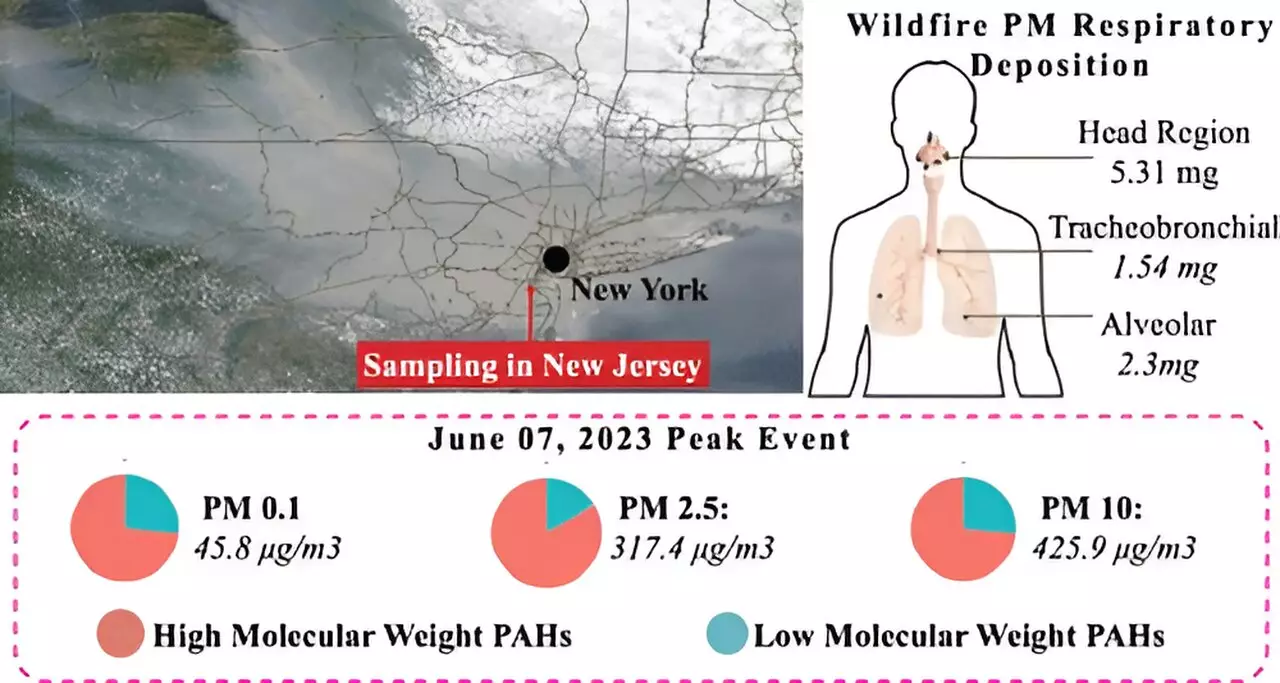The dual challenges of climate change and poor air quality are colliding in alarming ways, underscored by recent research from Rutgers University. In June 2023, a devastating wildfire event led to advisories affecting the respiratory health of over 100 million individuals in the Northeast U.S. This incident serves as a stark reminder of how climate-driven wildfires are not just natural disasters localized in remote terrains but significant environmental phenomena with widespread health implications. The research, published in the journal *Environmental Science & Technology*, offers a comprehensive examination of air quality degradation stemming from these fires, revealing a concerning level of particulate matter (PM)—a significant risk factor for various health issues.
Particulate matter is no ordinary pollutant; its intricate composition and size dictate the extent of its health impacts. The study led by Dr. Jose Guillermo “Memo” Cedeño Laurent highlighted that the concentration of ultrafine and fine particles recorded during the peak of the wildfire was nearly tenfold higher than established national air quality standards. These particles are particularly dangerous, as they can penetrate deep into the lung tissue, sparking respiratory and cardiovascular crises. The researchers found large quantities of polycyclic aromatic hydrocarbons (PAHs) linked to the combustion processes in wildfires, which are notorious for their carcinogenic properties. As environmental health challenges evolve, understanding how wildfire-related pollutants differ from traditional sources of air pollution becomes imperative.
Emerging studies increasingly pin the blame for health complications on wildfire smoke, revealing connections between such events and spikes in emergency medical visits for respiratory and cardiovascular issues. This is of particular concern in densely populated areas like New York City, where the burden of pollution already looms large. The Rutgers researchers identified that, for a 72-hour exposure period during the June wildfire, the estimated inhalation dose of PM10 was substantially elevated, leading to concerns about long-term health ramifications. These findings are crucial because they shed light on an often-overlooked aspect of public health: the fact that not all forms of pollution exert the same health effects.
The methodological rigor of this research cannot be overstated. Utilizing advanced physicochemical analyses allowed the Rutgers team to accurately assess the health risks bound up in particulate matter from wildfires. This multidimensional approach not only anchors the research in empirical data but also paves the way for subsequent investigations into the mechanisms underlying these harmful health impacts. The collaboration spans various academic institutions and departments, indicating a concerted effort to unravel the complex interactions between air quality, climate conditions, and human health.
The revelations from this study prompt a crucial question: how can we optimize public health strategies in the face of worsening air quality? The researchers note that the data gleaned from their findings should guide public health officials in assessing risks and developing mitigation strategies tailored to communities grappling with air quality challenges exacerbated by climate change. This is especially pressing in vulnerable urban areas that already contend with environmental disparities. Ongoing mechanistic studies will further unravel the impacts of particulate matter on various bodily systems, ranging from respiratory to reproductive health, providing a holistic view of the ecological and human health interconnections.
As climate change intensifies wildfire occurrences and their corresponding air quality repercussions, the insights from Rutgers University’s research underscore an urgent need for concerted action. The implications of these findings resonate not only with public health stakeholders but with policymakers as well, urging them to prioritize air quality improvement efforts in light of dynamic environmental challenges. Bridging the gap between scientific inquiry and public health application will be paramount if we are to safeguard communities against the escalating threat posed by climate-driven wildfire pollution. The research presented here represents not only a crucial step in understanding the environmental crises we face but also a pivotal moment for advocacy and policy change in pursuit of cleaner air and healthier communities.


Leave a Reply